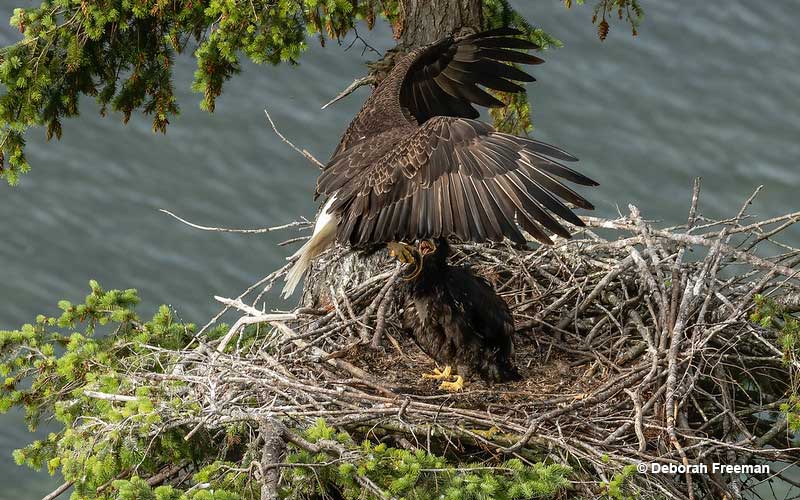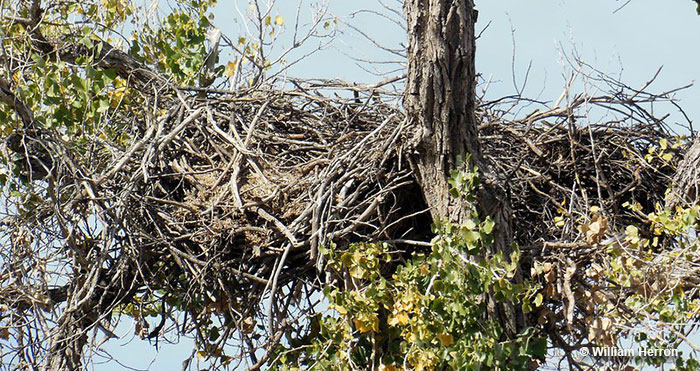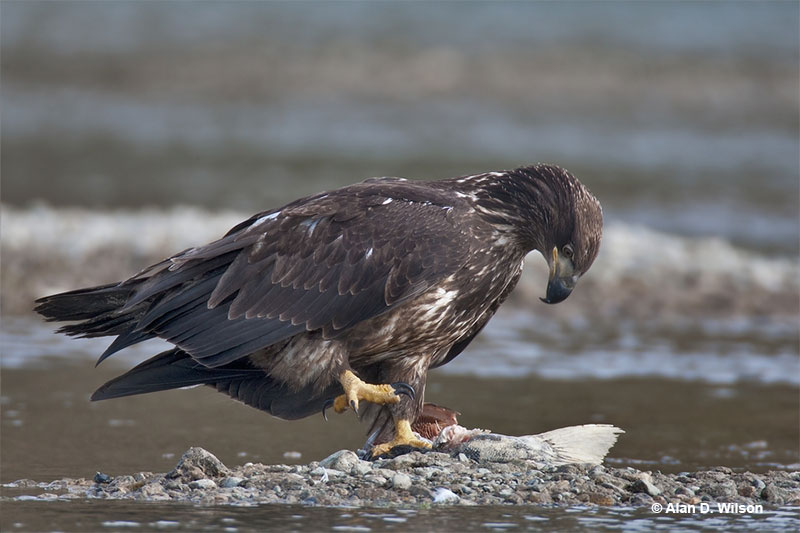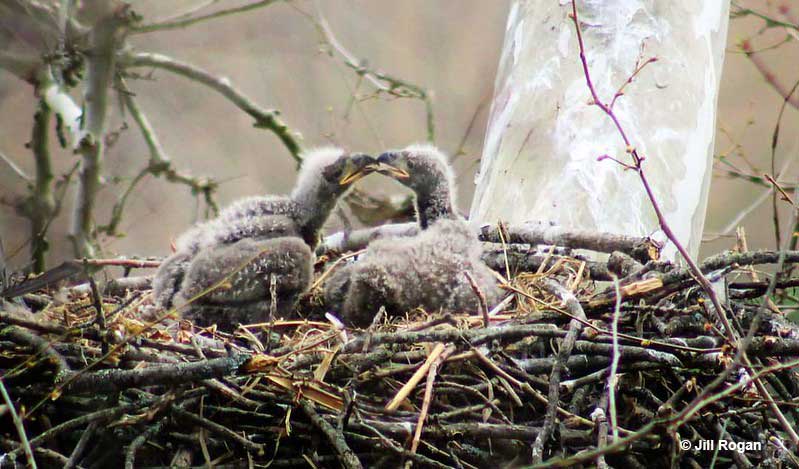
Every fearsome eagle starts life as a tiny baby. They look similar to many other species of baby birds, except for their hooked eagle-like beak.
Baby eagles, also known as eaglets, are a fascinating subject of study for bird enthusiasts and wildlife observers alike. These majestic birds of prey are born in nests high atop trees or cliffs, and must quickly learn to adapt to their harsh natural environment in order to survive.
Keep reading to learn everything you need to know about eaglets!
On this page
Nest
Bald Eagles are a species of bird that mates for life unless one of the two dies. Their courtship display is incredible to witness; birds will lock their talons and then spin, twirl, and flip through the air in a show that’s called a Cartwheel Display.

Eagle nests are easy to recognize once you’ve spotted them. Photograph © William Herron
It takes around 35 days for baby eagles to hatch. Hatchlings will fledge the nest when they’re around 12 weeks old and become independent birds 8 weeks after fledging. They’ll stay with their parents for 8 weeks after fledging, and the parents will continue to feed them during this time.
- The clutch size is 1 to 3 eggs.
- Bald Eagles have 1 brood per breeding season.
- The incubation period is 34 to 36 days.
- The nestling period is 56 to 98 days.
- Eggs are pale white and, most of the time, don’t have markings.
What Does a Baby Eagle Look Like?
Baby eagles either have white down, grey down, or thick fluffy brown down. However, there are better ways to identify them as an eaglet. The best way to identify one is to look for the hooked eagle-like beak.
Otherwise, they look similar to many other species of baby birds. However, baby eagles also have a noticeable egg tooth, which is a unique tip on the front of the beak that is used to pierce the eggshell. The egg tooth disappears a week after hatching.
How to Tell Baby Eagles Apart?
Baby eagles don’t reach full adulthood as quickly as other birds do, even though they reach quite a large size in just a couple months after hatching.
Related: Baby Birds – From Hatching to Adulthood
Adult plumage doesn’t fully appear until around 4 years of age. At this time, a juvenile eagle will have already reached full size and found its own territory. Many young eagles have grey-ish or brown and have tufts and mottled plumage of down until they’re 1 year old.
What Do Baby Eagles Eat?

© Alan D. Wilson
Baby eagles are given raw meat from the day they’re born. Mom and Dad don’t regurgitate the food; instead, they rip it up into small pieces and provide it to their young whole.
Related: What do baby birds eat?
When the babies first hatch, the mom stays with the babies while the dad hunts for food and feeds the chicks. Once the babies reach a week old, mom will join dad to go collect food.
Eaglets eat anywhere from 1 to 8 times a day; the bigger chick usually gets priority and is much more likely to survive.
Frequently Asked Questions
What is the name for a baby eagle?
Baby eagles are most commonly called an eaglet. However, they’re sometimes called fledglings or chicks as well. The name that they’re called is usually based on their age.
What does an eagle baby look like?
Baby eagles either have white down, grey down, or thick fluffy brown down. They have hooked eagle-like beaks as well. Said beak will have a noticeable egg tooth on it up to a week after hatching. An egg tooth is a unique tip on the front of the beak that is used to pierce the eggshell.
How long do baby eagles stay with their mom?
Baby eagles stay with their mom for 5 months total, they’ll spend 3 months in the nest, and then the last 2 months, eaglets will have fledged.
What are the stages of an eaglet?
Eaglets experience multiple different phases of plumage before leaving the nest. These phases involve primary down, secondary down, transitional down, and juvenile down. Eaglets are in the primary down phase when they hatch. Their plumage is fluffy grey, and they have a whitish throat and head.
The secondary down appears when the eaglet reaches the third week of age. This plumage is thicker, longer, and dark grey. During the transitional phase, eaglets are 4 to 6 weeks old and have dark brown-to-black feathers that emerge on the shoulders, back, wings, and breast. Finally, juvenile birds are fully feathered by 10 weeks old and will exercise their wings by jumping in the nest.


